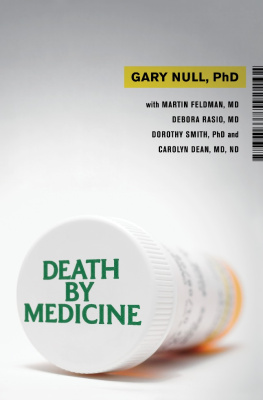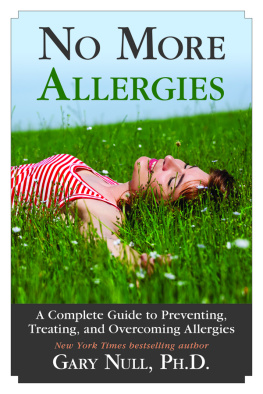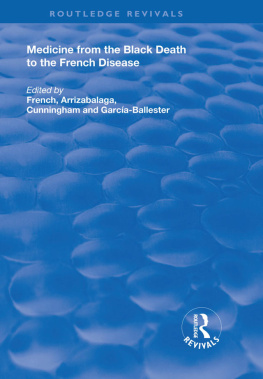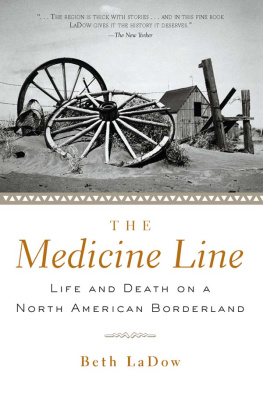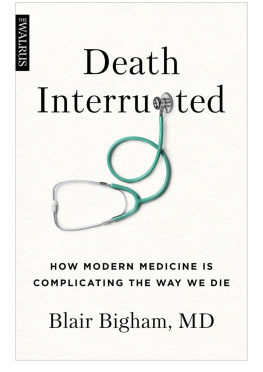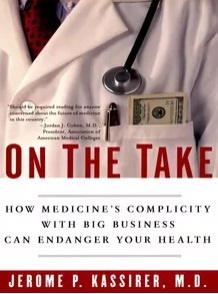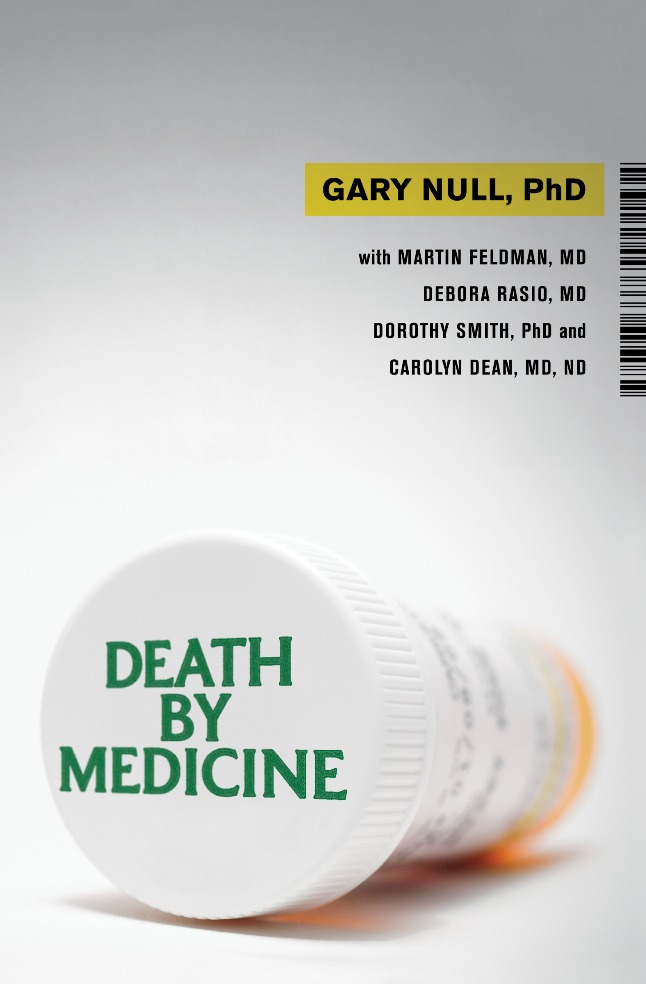Ideas and information in this book are based upon the experience and training of the author and the scientific information currently available. The suggestions in this book are definitely not meant to be a substitute for careful medical evaluation and treatment by a qualified, licensed health professional. The author and publisher do not recommend changing or adding medication or supplements without consulting your personal physician. They specifically disclaim any liability arising directly or indirectly from the use of this book.
Praktikos BooksP.O. Box 118Mount Jackson, VA 22842888.542.9467 info@praktikosbooks.com
Death by Medicine , Revised Paperback Edition 2011 by Nutrition Institute of America. All rights reserved. Printed in the United States of America. No part of this book may be used or reproduced in any manner whatsoever without written permission except in the case of brief quotations used in critical articles and reviews.
Praktikos Books are produced in alliance with Axios Press.
1
Introduction
S omething is wrong when regulatory agencies pretend that vitamins and nutritional supplements are dangerous. Many in the media, without scientific basis, denigrate the use of supplements, yet these vitamin critics ignore published statistics showing that the real hazard is government-sanctioned medicine.
In many respects, however, these regulatory agencies act as their own critics. The government is not blind to its own deficiencies in healthcare delivery. The Institute of Medicine, a part of the United States National Academy of Sciences, states:
Healthcare in the United States is not as safe as it should be.... Among the problems that commonly occur during the course of providing healthcare are adverse drug events and improper transfusions, surgical injuries and wrong-site surgery, suicides, restraint-related injuries or death, falls, burns, pressure ulcers, and mistaken patient identities [all of which exact] their cost in human lives.
The Institute of Medicine even refers to the nations epidemic of medical errors, many of which involve adverse drug reactions (ADRs). The US Food and Drug Administration (FDA) says that ADRs are one of the leading causes of morbidity and mortality in healthcare.
Archives of Internal Medicine published A Special Article by Curt D. Furberg, MD, PhD, et al., called The FDA and Drug Safety: A Proposal for Sweeping Changes. The section Problems with the Current System begins: We see eight major problems with the current system of assessment and assurance of drug safety at the FDA. The first of these says that the initial review for approval often fails to detect serious ADRs: A study by the US General Accountability Office (GAO) concluded that 51% of all approved drugs had at least one serious ADR that was not recognized during the approval process.
The irony is that safer (and less expensive) preventive alternatives are often attacked or strategically ridiculed by regulatory powers, evenor perhaps especiallywhen proven effective. This condescending stance toward alternatives may be fueled by their relative lack of side effects in a competitive marketplace.
Until recently, health researchers could cite only isolated statistics to make their case about the dangers of conventional medicine. No one had ever analyzed and compiled all the published literature dealing with injuries and deaths caused by government-protected medicine.
A group of researchers meticulously reviewed the statistical evidence, and their findings, included in this book, are absolutely shocking. In Death by Medicine , we will present compelling evidence that todays healthcare system frequently causes more harm than good.
This fully referenced book reveals a number of startling facts:
- The number of people having in-hospital, adverse reactions to prescribed drugs annually: approximately 2.2 million
- The number of unnecessary and/or inappropriate antibiotics prescribed annually: approximately 45 million per year
- The number of unnecessary medical and surgical procedures performed each year: 7.5 million

